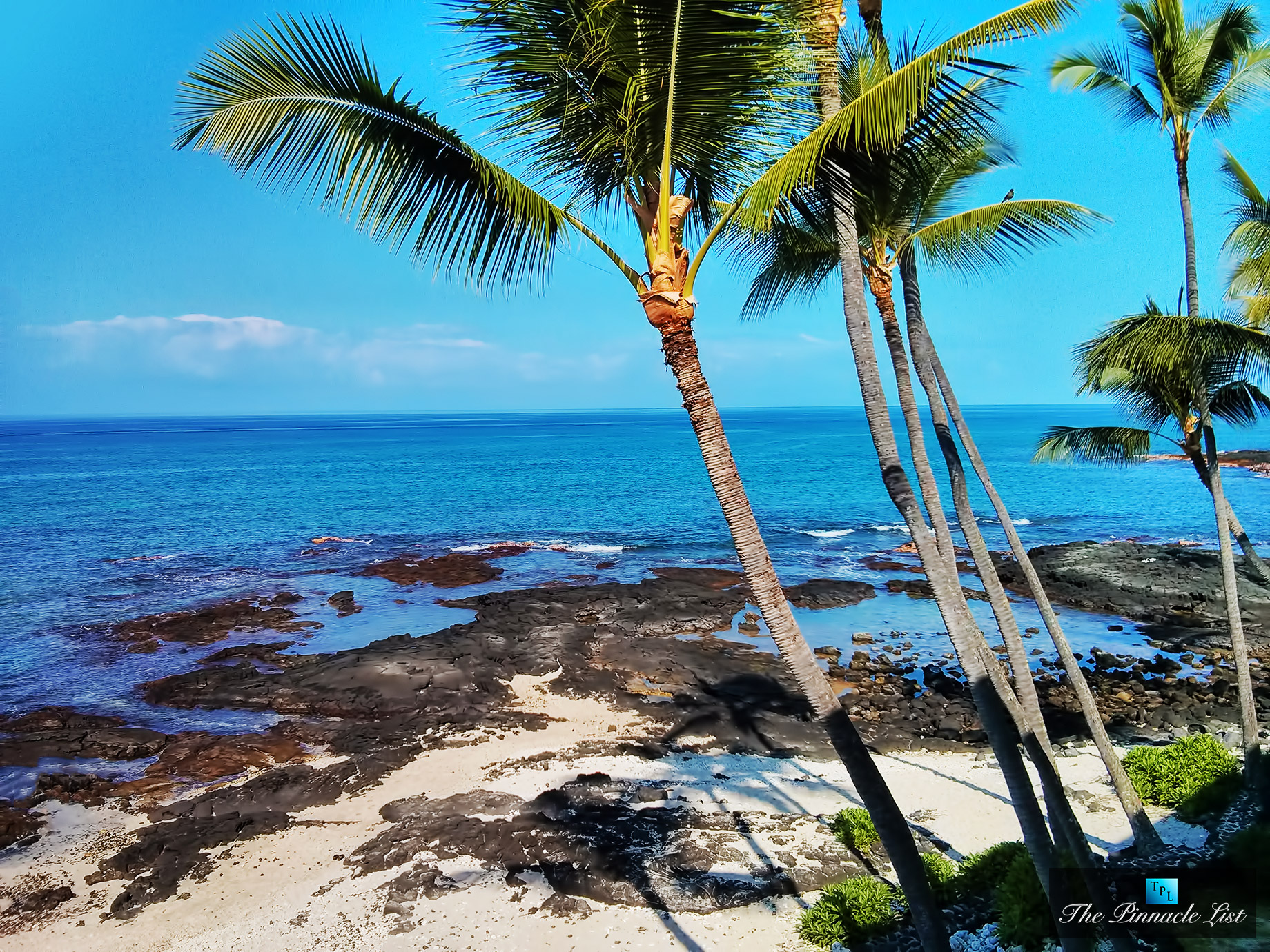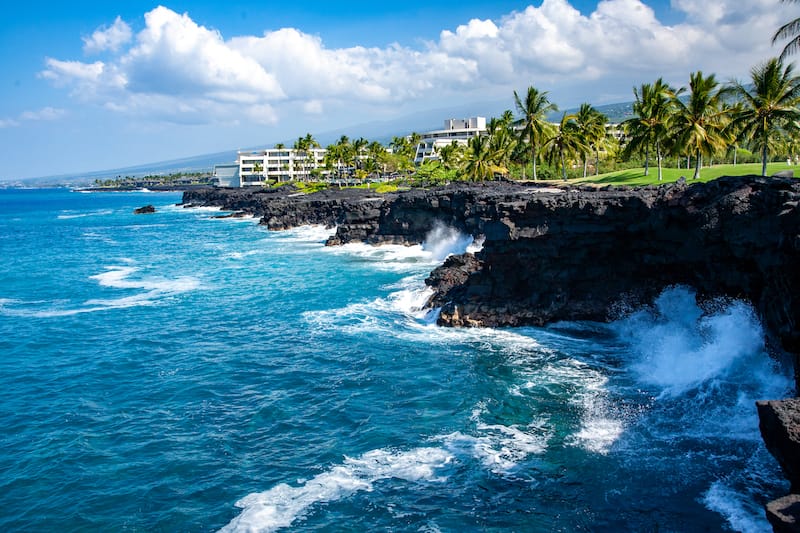Kona Coffee: A Hawaiian Treasure

Kona coffee, grown on the slopes of the Kohala and Mauna Loa volcanoes on the Big Island of Hawaii, is renowned for its unique flavor and aroma. Its rich history, meticulous cultivation practices, and strict quality control measures have made it one of the most sought-after coffees in the world.
The History of Kona Coffee
Kona coffee’s journey began in the late 18th century when Captain Cook introduced coffee plants to the islands. However, it wasn’t until the mid-19th century that Kona coffee cultivation took root, thanks to the efforts of Hawaiian King Kamehameha III. The ideal climate and volcanic soil of the Kona region provided the perfect conditions for growing high-quality coffee beans.
The Kona Coffee Growing Process
The cultivation of Kona coffee is a labor of love, involving meticulous hand-picking and processing methods. The beans are carefully hand-picked at peak ripeness, ensuring optimal flavor and aroma. The coffee cherries are then pulped, fermented, and dried, often under the Hawaiian sun, before being roasted and packaged.
The Kona Coffee Appellation
The Kona coffee appellation, a geographically defined region, ensures the authenticity and quality of Kona coffee. Only coffee grown within the designated Kona region can bear the Kona appellation. This strict control over origin and cultivation practices helps maintain the high standards that Kona coffee is known for.
Kona Coffee Compared to Other Varieties
| Coffee Variety | Origin | Flavor Profile | Price |
|—|—|—|—|
| Kona Coffee | Kona, Hawaii | Smooth, balanced, chocolate, nutty | High |
| Sumatra Mandheling | Sumatra, Indonesia | Earthy, bold, smoky | Medium |
| Ethiopian Yirgacheffe | Ethiopia | Floral, citrusy, bright acidity | Medium to High |
| Colombian Supremo | Colombia | Mild, nutty, chocolate | Medium |
| Brazilian Santos | Brazil | Nutty, chocolate, smooth | Low |
Exploring Kona’s Natural Beauty

Kona, nestled on the Big Island of Hawaii, boasts a captivating landscape that seamlessly blends volcanic grandeur, lush rainforests, and breathtaking coastlines. This natural wonderland offers a diverse array of experiences for outdoor enthusiasts and nature lovers alike. From challenging hikes through volcanic terrain to leisurely strolls along pristine beaches, Kona’s natural beauty is a treasure waiting to be explored.
Diverse Landscapes of Kona
Kona’s landscape is a testament to the island’s volcanic origins. The region is dominated by the imposing Mauna Loa and Kilauea volcanoes, which have shaped the island’s topography over millennia. The volcanic terrain is characterized by rugged lava flows, dramatic cliffs, and fertile volcanic soil that supports a vibrant ecosystem.
Beyond the volcanic landscapes, Kona is also home to lush rainforests, where towering trees and vibrant flora create a serene and tranquil atmosphere. The rainforests are teeming with diverse wildlife, including native birds, insects, and reptiles.
The coastline of Kona is equally breathtaking, with miles of pristine beaches, crystal-clear waters, and dramatic volcanic cliffs. The Pacific Ocean provides a playground for water sports enthusiasts, while the calm waters of the Kona Coast are ideal for swimming, snorkeling, and diving.
Hiking Trails and Scenic Drives
Kona offers a wide range of hiking trails, catering to all levels of experience. For those seeking a challenging hike, the Kealakekua Bay Trail offers stunning views of the coastline and the historic Kealakekua Bay, where Captain Cook first landed in Hawaii.
For a more leisurely hike, the Captain Cook Monument Trail leads to the Captain Cook Monument, a historical landmark commemorating the explorer’s legacy.
For those who prefer to explore Kona’s natural beauty by car, the scenic Kona Coast Drive offers breathtaking views of the coastline, volcanic terrain, and lush rainforests. The drive is dotted with numerous viewpoints, allowing visitors to soak in the beauty of the island’s landscape.
Best Beaches in Kona, Kona hawaii
Kona’s coastline is home to some of the most beautiful beaches in Hawaii. Here’s a table showcasing the best beaches in Kona, highlighting their unique features and activities:
| Beach | Unique Features | Activities |
|—|—|—|
| Hapuna Beach State Recreation Area | White sand beach, calm waters, excellent for swimming and snorkeling | Swimming, snorkeling, sunbathing, picnicking |
| Kealakekua Bay | Historic bay, calm waters, excellent for kayaking and paddleboarding | Kayaking, paddleboarding, snorkeling, diving, whale watching (in season) |
| Manta Ray Night Dive | Famous for manta ray viewing, calm waters | Night snorkeling, diving |
| Kahalu’u Beach Park | Shallow reef, excellent for snorkeling and diving | Snorkeling, diving, swimming |
Preserving Kona’s Natural Environment
Kona’s natural beauty is a precious resource that needs to be protected for future generations. The local community plays a vital role in preserving the island’s ecosystem through sustainable practices and environmental awareness.
The importance of preserving Kona’s natural environment cannot be overstated. The island’s unique ecosystem supports a diverse range of plant and animal life, including endangered species. The health of the coral reefs, rainforests, and volcanic landscapes is essential for the island’s economy and cultural heritage.
“We have a responsibility to protect the natural beauty of Kona for future generations. It is our legacy to ensure that the island’s pristine environment remains a source of wonder and inspiration for all.” – Local resident
Kona’s Cultural Heritage and Activities: Kona Hawaii

Kona’s cultural heritage is deeply rooted in the rich history and traditions of the Hawaiian people. The region has been a center of Hawaiian life for centuries, and its cultural significance continues to be celebrated today. From traditional practices and art forms to vibrant festivals and events, Kona offers a unique opportunity to immerse yourself in the spirit of Aloha.
Traditional Hawaiian Practices
Traditional Hawaiian practices are a testament to the deep connection between the people and their environment. These practices have been passed down through generations, ensuring the preservation of Hawaiian culture.
- Hula: This traditional dance is more than just entertainment; it’s a powerful storytelling medium that expresses Hawaiian history, mythology, and values. The graceful movements and rhythmic chants are captivating and provide a glimpse into the heart of Hawaiian culture.
- Lei Making: Lei, garlands of flowers, are an integral part of Hawaiian tradition, symbolizing love, respect, and hospitality. The art of lei making involves intricate weaving techniques using various flowers, leaves, and shells.
- ʻUkulele: This four-stringed instrument is an iconic symbol of Hawaii. Its origins can be traced back to the Portuguese immigrants who brought the braguinha to the islands. The ʻukulele has become an integral part of Hawaiian music and is enjoyed by people of all ages.
Art Forms
Hawaiian art forms are diverse and expressive, reflecting the beauty and spirituality of the islands. These art forms offer a unique window into the creative spirit of the Hawaiian people.
- Wood Carving: Skilled artisans use traditional techniques to carve intricate designs into wood, often depicting animals, deities, and other symbolic figures. These carvings are highly valued for their craftsmanship and cultural significance.
- Weaving: The art of weaving is deeply rooted in Hawaiian tradition, with materials like hala leaves, coconut fibers, and ʻieʻie vine being used to create mats, baskets, and clothing. These woven items are both functional and beautiful, showcasing the skill and artistry of Hawaiian weavers.
- Painting: Contemporary Hawaiian artists are renowned for their vibrant and expressive paintings. They often draw inspiration from nature, mythology, and the cultural heritage of their ancestors, using bold colors and unique techniques to create captivating works of art.
Music
Hawaiian music is a captivating blend of traditional melodies, instruments, and storytelling. It is a vibrant expression of the island’s culture and history, captivating audiences with its beauty and soulfulness.
- Hawaiian Slack Key Guitar: This unique style of guitar playing involves tuning the strings to create a mellow and hypnotic sound. The music often features traditional Hawaiian songs and chants, evoking a sense of peace and tranquility.
- Hawaiian Chant: These ancient chants are an important part of Hawaiian culture, used to tell stories, preserve history, and connect with the spiritual world. The chants are often accompanied by rhythmic drumming and are a powerful testament to the oral traditions of the Hawaiian people.
- Contemporary Hawaiian Music: Modern Hawaiian musicians are blending traditional styles with contemporary influences, creating a vibrant and innovative sound. This fusion of music is attracting a new generation of fans and showcasing the evolution of Hawaiian music.
Cultural Events and Festivals
Kona is home to a variety of cultural events and festivals that celebrate the rich heritage of the Hawaiian people. These events offer a unique opportunity to experience the vibrant traditions and spirit of Aloha firsthand.
- Merrie Monarch Festival: Held annually in Hilo, this renowned festival is a celebration of Hawaiian culture, featuring hula competitions, traditional music, and craft demonstrations. It is considered the most prestigious hula competition in the world and attracts thousands of visitors from around the globe.
- Keauhou Shopping Center’s Hoʻolauleʻa: This monthly event features live music, cultural demonstrations, food vendors, and craft booths, providing a glimpse into the vibrant traditions and culture of Kona. The event is a great opportunity to learn about Hawaiian arts and crafts, enjoy delicious local cuisine, and experience the spirit of Aloha.
- Kona Coffee Cultural Festival: While primarily focused on coffee, this annual festival also includes cultural performances, demonstrations, and craft booths, showcasing the rich heritage of the Kona region.
Travel Itinerary
- Immerse yourself in the art of hula: Attend a traditional hula performance at the Huliheʻe Palace or the Kona Cultural Center. You can also take a hula lesson to learn the basic steps and movements of this captivating dance form.
- Explore the history and culture of the Hawaiian people: Visit the Puʻuhonua o Honaunau National Historical Park, a place of refuge for those who broke the kapu (ancient laws). The park features traditional Hawaiian structures, petroglyphs, and exhibits that tell the story of Hawaiian history and culture.
- Experience the beauty of traditional Hawaiian crafts: Visit the Kona Coffee Belt and browse the local art galleries and craft shops. You can find unique handcrafted items, such as wood carvings, woven mats, and jewelry, made by local artisans.
- Enjoy a luau: Attend a traditional luau to experience the food, music, and dance of Hawaiian culture. Luau typically feature a feast of Hawaiian dishes, including kalua pig, poi, and fresh seafood. You can also enjoy live music and hula performances, immersing yourself in the spirit of Aloha.
- Attend a cultural event: Check the local calendar for cultural events and festivals happening during your visit. You can attend a hula competition, a craft fair, or a music festival to experience the vibrant traditions and culture of Kona firsthand.
Kona hawaii – Kona, Hawaii, is a paradise for surfers and sunbathers, but getting there can be a bit of a journey. If you’re flying from Chicago, you’ll likely be connecting through O’Hare International Airport, and navigating the Alaska Airlines terminal at ORD is key to a stress-free start to your Hawaiian adventure.
Once you’ve landed in Kona, the beauty of the Big Island will greet you with open arms, ready for you to explore its volcanic landscapes and pristine beaches.
Kona Hawaii, a name that conjures up images of sun-drenched beaches and volcanic landscapes, is a place where history and nature intertwine. One of the most captivating towns in the area is Kailua Kona , a charming coastal hub steeped in Hawaiian culture and offering breathtaking views of the Pacific.
From its bustling harbor to its historic sites, Kona Hawaii promises an unforgettable experience.
